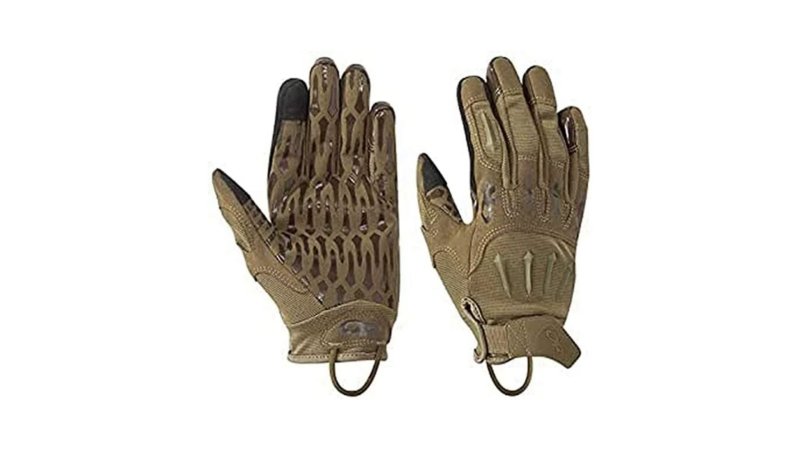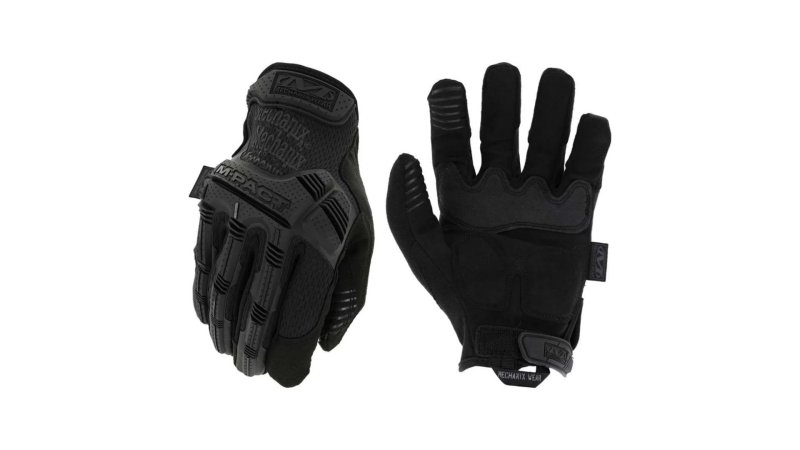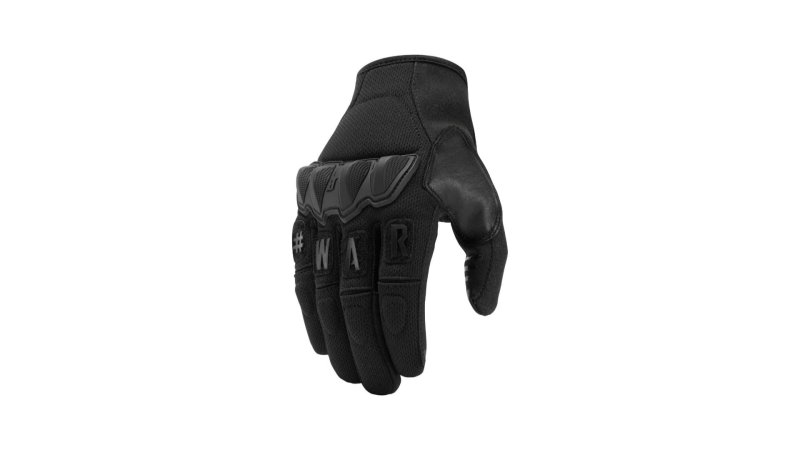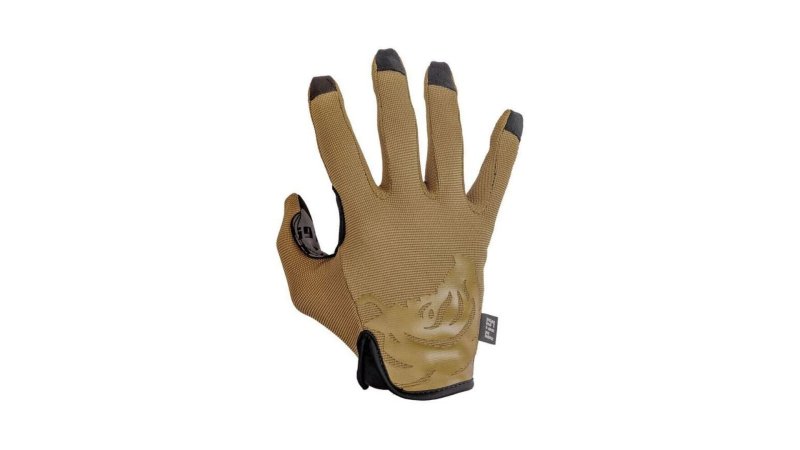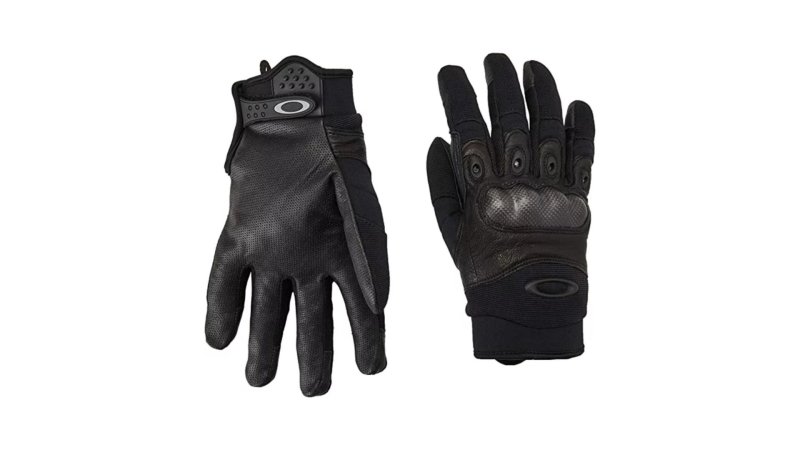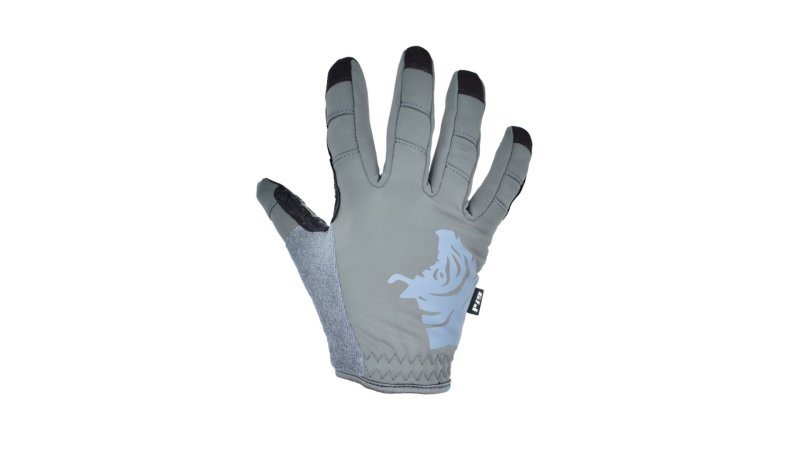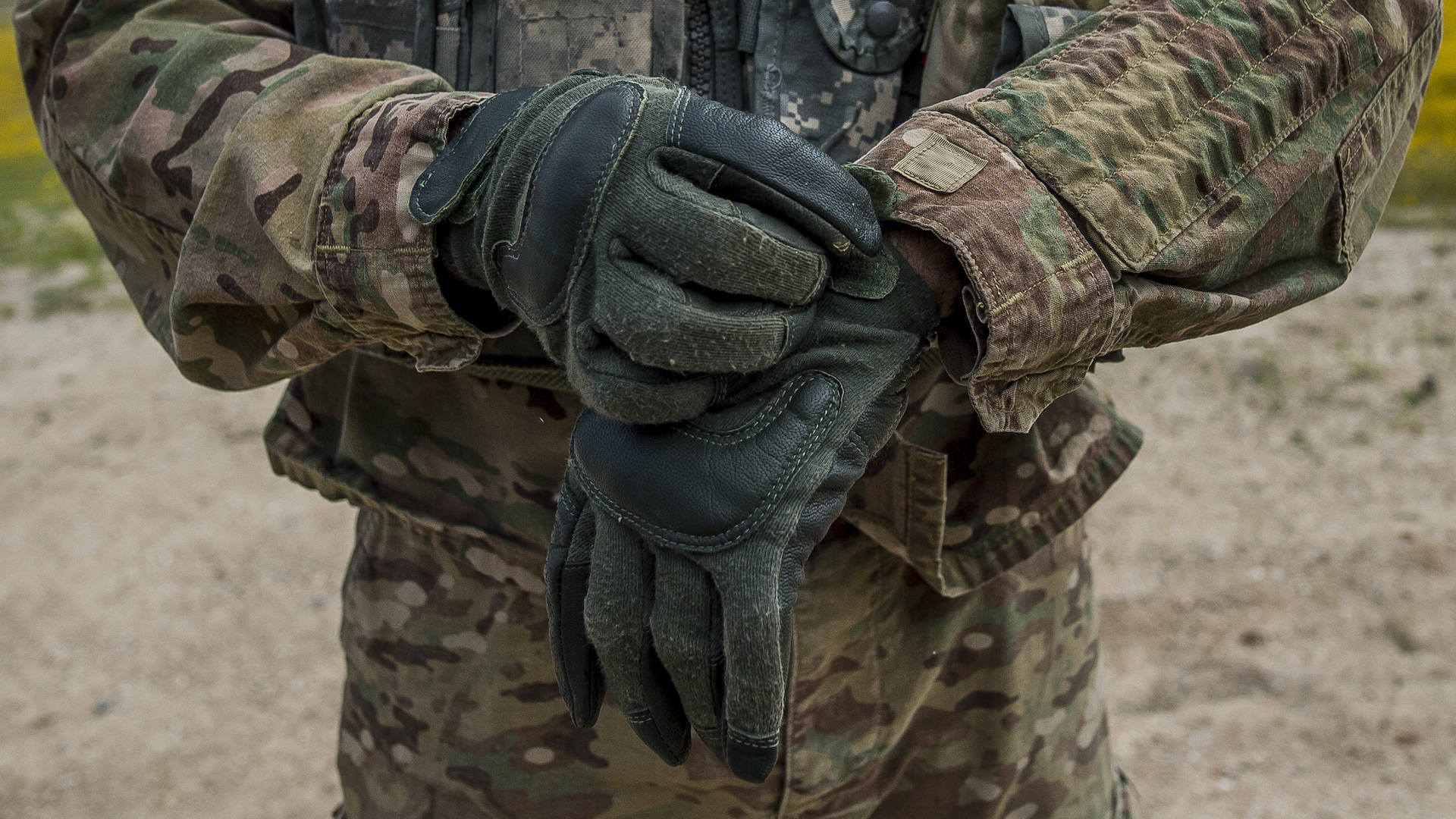

We may earn revenue from the products available on this page and participate in affiliate programs.
WEAR YOUR GLOVES! Any service member who has ever been injured knows the important C-Y-A factor of wearing your PPE. We have all heard the stories of people getting injured and the first question being, “were they wearing their [eyepro, kevlar, gloves, etc]?”
Old sergeants’ tales aside, your hands are important, but so is grip. As shooters, that is the trade-off we navigate. On one hand, your hands are vital to shooting, therefore they must be protected from cuts, burns, exposure to lead or the elements, and/or infection. On the other hand, your grip is an important shooting fundamental, one that could mean the difference between a well-placed shot and a flier. Many shooters have calculated the risk versus reward and decided to go without gloves. Thankfully, we live in a world where the tradeoffs are minor. That is, as long as you pick the right pair of gloves for your application.
In this article, we’ll be examining the best shooting gloves for dexterity, hard use, cold weather, and flame resistance. There are tons of glove offerings on the market, so we sought out gloves from reputable brands with proven track records.
Methodology
There are tons of shooting and tactical glove offerings on the market. In order to compile this list, I researched and evaluated more than two dozen options compiled by scouring internet forums and Reddit, speaking with both active-duty and veteran U.S. service members, and discussing the important criteria of shooting gloves with competitive shooters that I shoot with regularly.
We ended up with this performance matrix, with what we decided was important, and compared the list of gloves to the five attributes on the Shooting Glove Performance Matrix: grip, feel, dexterity, insulation, and durability.

Based on reviews, hands-on experiences, and manufacturer-published data, I evaluated gloves based on these five categories. When I had the list narrowed down to the top two choices per category, I ordered the gloves and put them to the test to confirm my hypothesis. The gloves on this list will serve you well as long as you use them in the correct application.
Best Overall
Outdoor Research Ironsight Sensor
Pros
- Whole-hand grip modules
- Protection where it matters
- Excellent glove at an excellent price
Cons
- Wears out pretty quickly
Product Specs
- Type of glove: Middleweight
- Materials: Polyester, spandex, nylon, polyurethane
- Colors: Black, coyote
Best Value
Mechanix M-Pact
Pros
- Accessible everywhere from PX to Autozone
- Can easily be found under $30
- Impact-absorbing rubber
- Very durable (especially for the price
Cons
- Jack of all trades, master of none
- Lacking in dexterity and feel
Product Specs
- Type of glove: Middleweight
- Materials: Synthetic leather, nylon, thermoplastic rubber
- Colors: Black, coyote, MultiCam, grey
Editor’s Choice
Viktos Wartorn
Pros
- Finger grips (silicone)
- Reinforced at wear spots
- Backside hand protection
Cons
- Too much room in fingers
- Aesthetics where the function could improve
Product Specs
- Type of glove: Middleweight
- Materials: Synthetic suede, polymer, mesh, silicone
- Colors: Black, camo, coyote, grey, ranger green
Best for Dexterity
PIG FDT Delta
Pros
- Majority hand grip module
- Great fit, grip, and feel
- Seamless fold-over fingertips
Cons
- No sizing adjustments
- Offers good grip, not much else
Product Specs
- Type of glove: Lightweight
- Materials: Nylon, polyester, polyurethane
- Colors: Black, coyote, ranger green, grey, MultiCam, MultiCam black
Best for Hard Use
Oakley Factory Pilot 2.0
Pros
- Shielded knuckles provide ultimate hand protection
- Whole hand grip (non-silicone)
- Water-repellent
Cons
- Not as durable as other hard use gloves
- Can be fairly expensive
Product Specs
- Type of glove: Heavyweight
- Materials: Goat skin, elastane, nylon, rubber, carbon
- Colors: Black, coyote
Best Cold-Weather
PIG FDT Cold Weather Glove
Pros
- Wind-resistant and warm
- Added material to wipe your nose with
- Built with dexterity in mind
- Full hand silicone grips
Cons
- No adjustments for hand size
- Pricey for what it is
Product Specs
- Type of glove: Heavyweight
- Materials: Nylon, polyester, polyurethane
- Colors: Black, white, grey, coyote
What to consider when buying a pair of shooting gloves
There are a ton of options as far as shooting gloves go. The list extends beyond the ones listed in this review and, understandably, people prefer different things. If you choose to pick another offering, let this section be your guide on different categories of shooting gloves and key features to look out for.
Types of shooting gloves
I’ve categorized shooting gloves into three different types. There are lightweight, which are often specialized gloves; middleweight, which are well rounded; and heavyweight, which are meant for hard, specialized use. Each category has its distinct differences and uses. In fact, I often carry both lightweight and middleweight gloves.
Lightweight
These gloves are light. Though they are generally affordable, they are not necessarily cheaply made. Usually, these trade insulation (and sometimes durability) for dexterity, feel, and grip.
Consider these a specialty glove. A professional glove. Sleek and specialized. These gloves can sometimes hack it in the field but are not purpose-built to withstand harsh conditions. Mostly, I love these types of gloves for hot days at the flat range or shooting matches where I want at least some protection on my hands.
Gloves in this category include the PIG Full Dexterity Tactical Alpha and Delta, Mechanix Fast Fit, and Magpul Technical gloves.
Middleweight
Middleweight is usually where the well-rounded gloves can be found. Unless you require carbon-fiber knuckle protection or extreme insulation, this is probably about as high in protection as you need to go. Your hands are well-protected against minor scrapes and bumps at this level, but do not go grabbing suppressors or expect to punch through drywall. In this weight class, you might get some weather protection and insulation, but not enough for the arctic.
Gloves in this category include the Outdoor Research IronSight, Viktos Wartorn, and Mechanix MPact gloves.
Personally, I own both middleweights and lightweights to give me options on days where the weather might change or I might have to move splintery target stands.
Heavyweight
These, like the lightweights, are specialized. They just exist on the other end of the spectrum and can be specialized in any number of ways. The tradeoff here is usually in the dexterity and feel categories.
These are for hard use and will protect your hands, whether from physical dangers or the elements. In this category, there’s a wide range of gloves for a wide range of applications. While these may not be the best shooting gloves for flat range, these are usually the best shooting gloves for situations they were designed for.
Gloves in this category include the Oakley Factory Pilot 2.0, Viktos Cold Shot, and a variety of tactical gloves.
Key features of shooting gloves
Remember, shooting gloves do not necessarily have to be marketed as “shooting gloves.” I’d even venture as far as to say that mountain bike and wide receiver gloves would make better shooting gloves than some shooting gloves. Nonetheless, there are key features to look for when choosing a pair of shooting gloves. I’ve narrowed it down to four essential features for the sake of simplicity: closure, fit, dexterity, and protection.
Closure
This refers to the way in which your gloves are secured to your hands. Gloves come with several different types of closures. Whether Velcro, zipper, or integrated elastic, it is important that you have some sort of mechanism to keep the gloves secure on your hands.
Fit
There is a reason the idiom “fits like a glove” exists. You essentially want your shooting gloves to be a second skin. Too tight and you’ll lose dexterity and maybe even blood flow, and too loose and your grip becomes sloppy. Fit also lends itself to comfort. In my experience, if gloves do not fit well, I tend not to wear them. Therefore, uncomfortable gloves are a waste of money.
Dexterity
While you want your gloves to fit, remember, shooting still requires a lot of fine motor skills. Shooting gloves should enable dexterity. From reloads to trigger pulls, you should be able to work the firearm as if you weren’t wearing gloves.
Protection
Protection is the main reason for wearing gloves. The material or design of the glove should incorporate a layer of protection against hazards such as burns, cuts, and even environmental factors. Whether hardened knuckles, padding, insulation, or simple cloth protection, make sure your gloves have something that can protect your hands.
Shooting gloves pricing
No matter the material, features, or cost, gloves will wear and tear during hard or consistent use and you’ll have to buy more, so it’s difficult to categorize gloves into price ranges. With that said, good-quality shooting gloves cost around $30 and can get up to as much as $60. The price of the glove increases when you start adding in features like insulation, waterproof or fireproof fabrics, knuckle protection, etc.
FAQs for shooting gloves
You’ve got questions, Task & Purpose has answers.
Q: Can anyone use shooting gloves?
A: Anyone can, and (in my opinion) should, use shooting gloves. No matter which glove you choose, having that added layer of protection will protect you from potential lacerations, burns, the elements, and,most importantly, lead poisoning. Besides, training with gloves on enables you to shoot well with them on or off, while training without doesn’t.
Q: How tight should shooting gloves be?
A: Most manufacturers publish a sizing guide to help you pick what size is right for you. Personally, I prefer my gloves tight enough where it moves with my hands (and not away from them), but not so tight to where blood circulation is getting cut off.
Q: Are shooting gloves easy to clean?
A: It depends. If you’re like me, those suckers go into the washing machine and then hang dry or sit out in the sun. If you are the type to care a little more about your gear, I recommend the gentler approach: hand-washing.
Q: Are shooting gloves worth it?
A: Definitely! As a recent convert from the “no glove gang,” I have seen/endured enough pain in my hands to tell you that shooting gloves are worth every penny. Have you tried shooting barehanded in freezing rain? Extremely unpleasant.
Q: What shooting gloves does the military use?
A: The U.S. military historically issued pretty unremarkable leather gloves, generally speaking. However, if you happen to stumble on any given field exercise, you’ll almost certainly find several pairs of Mechanix and/or Oakley (or Oakley knock-off) gloves.
